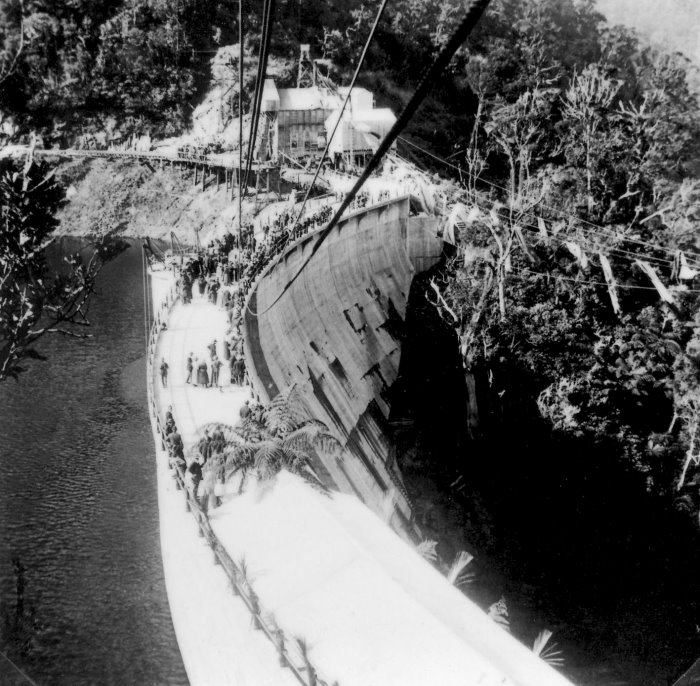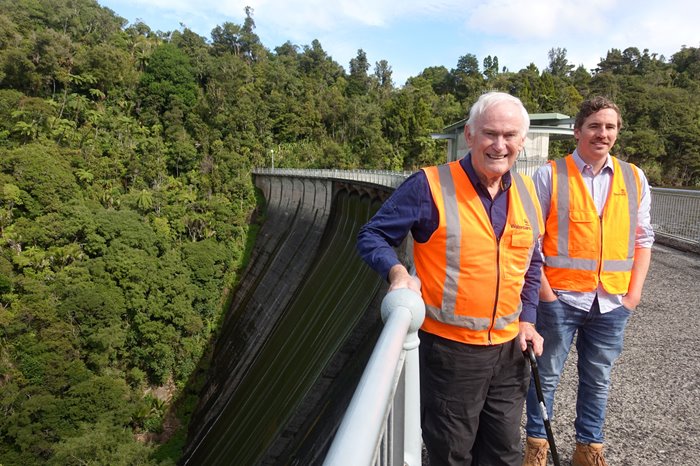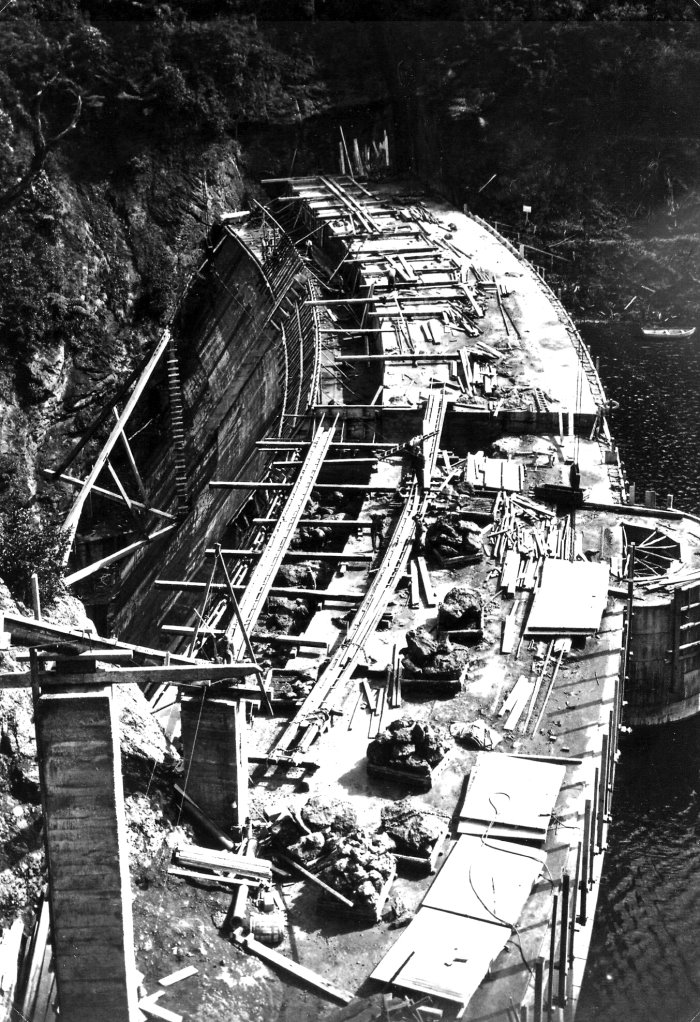Auckland’s second oldest water supply dam is turning the ripe old age of 100 on Friday 14 April 2023. Upper Nihotupu Dam in the Waitākere Ranges was officially opened on April 14, 1923.
Environmental assets manager James Talbot says while the dam itself is fighting fit, the raw watermain which carries water from the dam to the Huia Water Treatment Plant was significant damaged in the January and February weather events, which has put the dam temporarily out of service.
“It’s not what you’d want for your 100th birthday, but we’re working on the issues and we expect to have the dam back in service well ahead of summer,” he says.
“From an operational perspective, this dam provides a really important water source for Auckland. It’s gravity fed so we don’t have to rely on pumping, which makes it one of our cheaper and more sustainable water sources.
“It’s also completely off-grid – a characteristic that sets it apart. It generates power from micro hydro turbines that operate off the compensation flow – a constant flow of water that’s released from the dam as one of our consent conditions. These turbines, and a solar panel, create enough power for valve operation, communications, the control system and lighting.”
 The Upper Nihotupu Dam official opening, 14 April 1923
The Upper Nihotupu Dam official opening, 14 April 1923
Upper Nihotupu Dam is Auckland’s highest – and coldest – dam. It’s one of three concrete dams in the Waitākere Ranges. On average, it supplies about 22 million litres of water each day.
Principal dam safety engineer Wal McQuarrie, who has worked at the company for 52 years and has a visitor’s centre named after him, says the dam has stood the test of time.
“Except for us having to restore the pipes in the valve tower, and raising the valve tower a bit, Upper Nihotupu Dam hasn’t needed much work over the past 100 years. I reckon it’s in great nick for a 100-year-old.”
 Principal dam safety engineer Wal McQuarrie and environmental assets manager James Talbot
Principal dam safety engineer Wal McQuarrie and environmental assets manager James Talbot
The dam gets a full medical each year – with a team of our dam engineers and folks from Dam Safety Intelligence carrying out a thorough visual inspection and analysing the data from the various monitoring instruments. Dam technicians also keep a close eye on the dams and their water catchments, with frequent checks looking for any changes in the surrounding area and the dam infrastructure.
McQuarrie says the dam’s construction was challenging on a number of fronts.
“It took eight years to build this dam,” he says. “Aside from the challenging terrain, World War One meant there was a major shortage of both labour and materials, and more workers were lost to the flu epidemic.”
Sand, cement and coal were transported by barge from Onehunga across the Manukau Harbour to the wharf at Big Muddy Creek. It was then hauled 4 kilometres up the Nihotupu Valley along a tramline, and lifted by steam winch up a 640-metre-long incline. Finally, it was hauled by a locomotive to the dam construction site.
A lot of the material used in the dam’s construction was quarried from the head of the lake.
The end result was a 50-metre high concrete dam, that’s 162 metres long at its crest. It can hold 2.2 billion litres of water.
“They didn’t have the expertise for earth-filled dams back in those days, but these V-shaped valleys were well suited to the concrete dams,” McQuarrie says.
“With the boys coming back from the war there was a lot more demand for water, and this dam was desperately needed when it was completed in 1923.”
 The dam crest under construction
The dam crest under construction
Then Mayor of Auckland, James Gunson, and Minister of Public Works Joseph Coates were among the VIPs at the celebration that marked the dam’s completion on April 14, 1923. According to an article published in the Auckland Star, Coates gave a “happily phrased speech” before giving the valve wheel “six smart turns” to release the water down the pipeline.
As well as its important role in supplying water for the people of Tāmaki Makaurau, the dam’s catchment has been used as a location for filming hit movies including The Hunt for the Wilderpeople and Mr Pip.
We hope to celebrate the dam’s centenary with tours for the public later in the year.